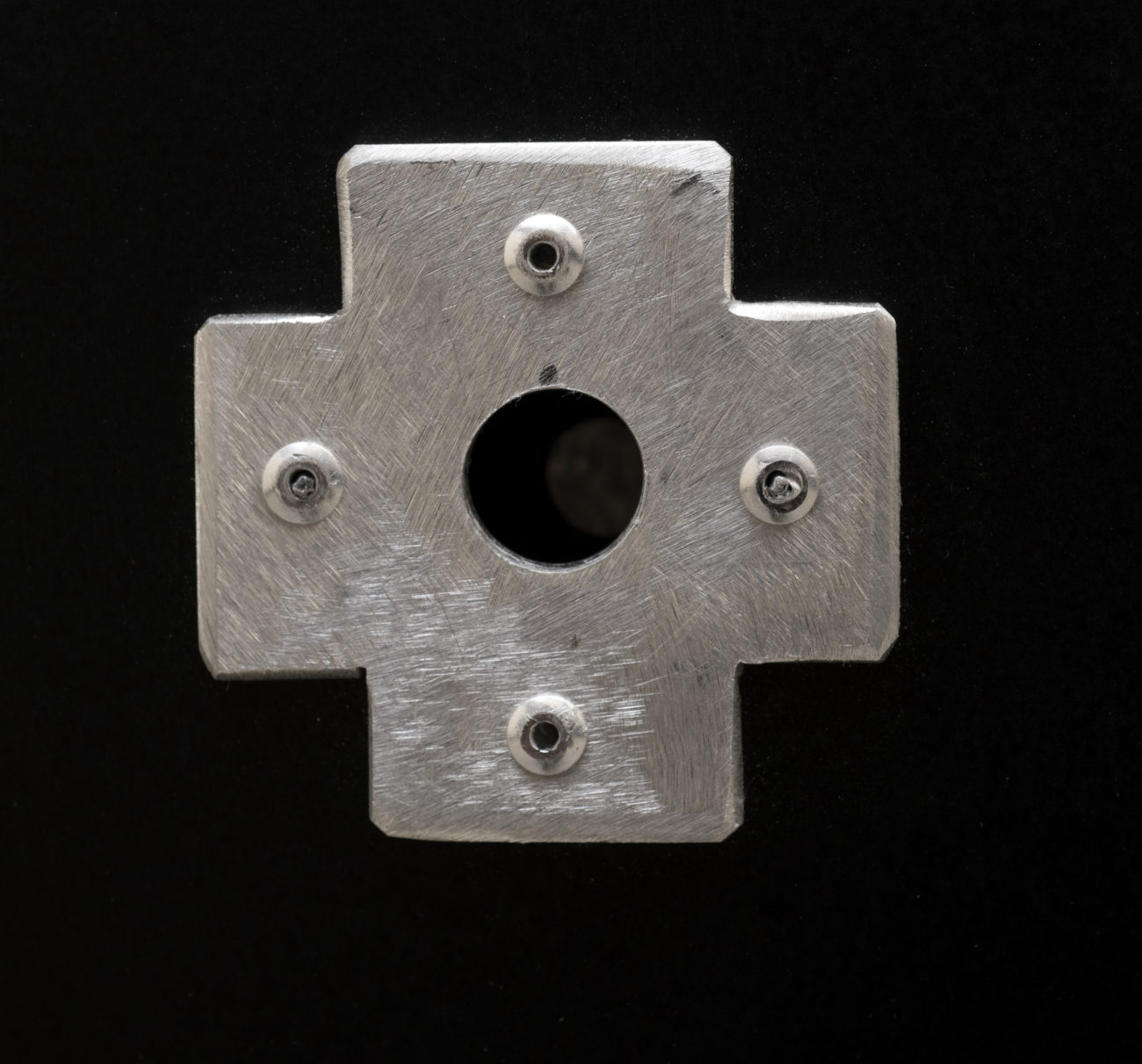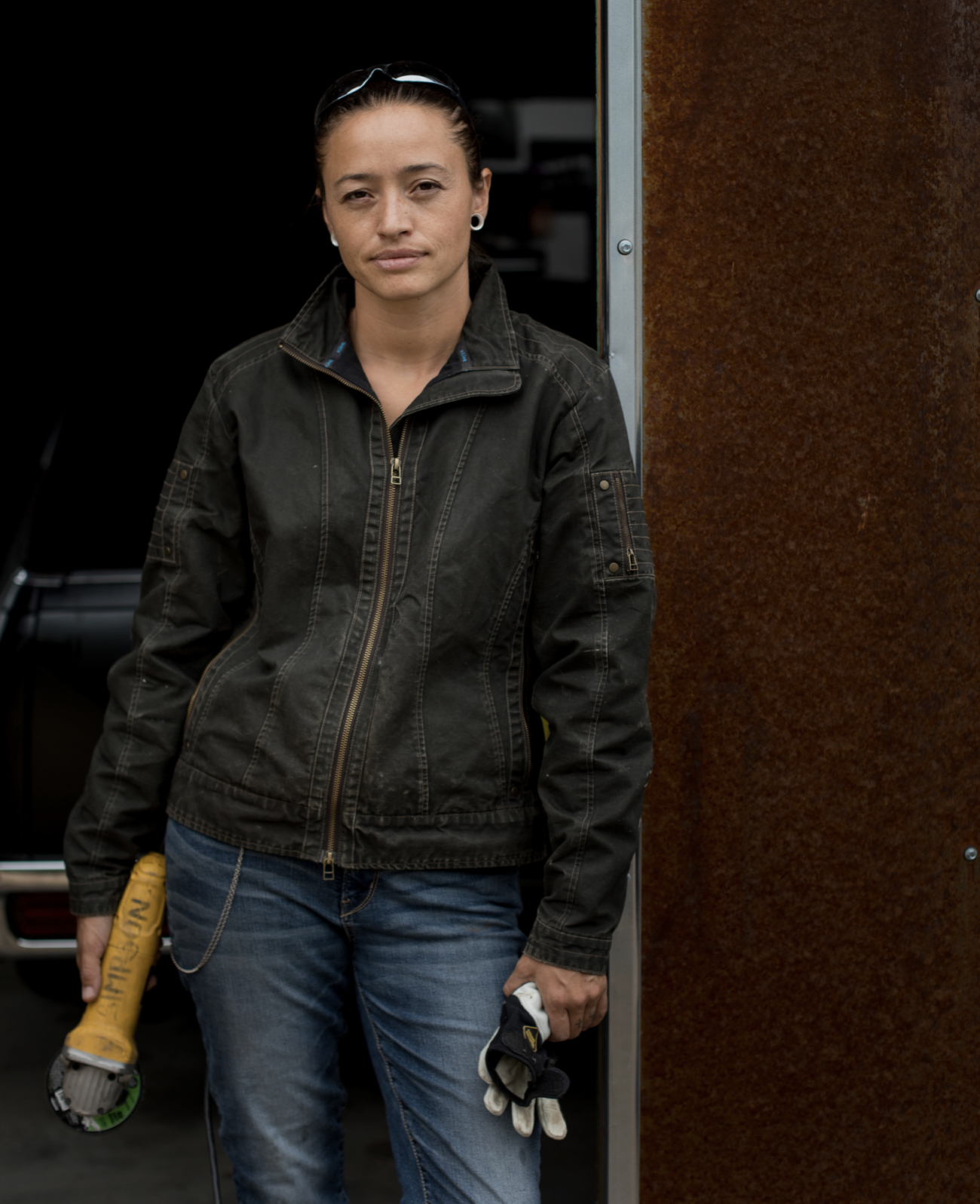
Rose Bean Simpson is a multi-talented artist whose work spans across many mediums – from pottery to performance to auto-mechanics to printmaking. Her work reflects not only her diverse technical skills, but also a deeply meaningful connection to the subject being depicted. Born and raised in Santa Clara Pueblo, New Mexico, Rose grew up surrounded by art and artists; her mother – the renowned clay sculptor, Roxanne Swentzell (Santa Clara Pueblo) and her father – Patrick Simpson, a notable contemporary sculptor working in metal and wood. She was also greatly influenced by the work of artists from surrounding pueblos, including famed San Ildefonso potter, Maria Martinez, who was one of her biggest inspirations and, later, the subject of one of her most notable pieces to-date, a custom painted 1985 El Camino.
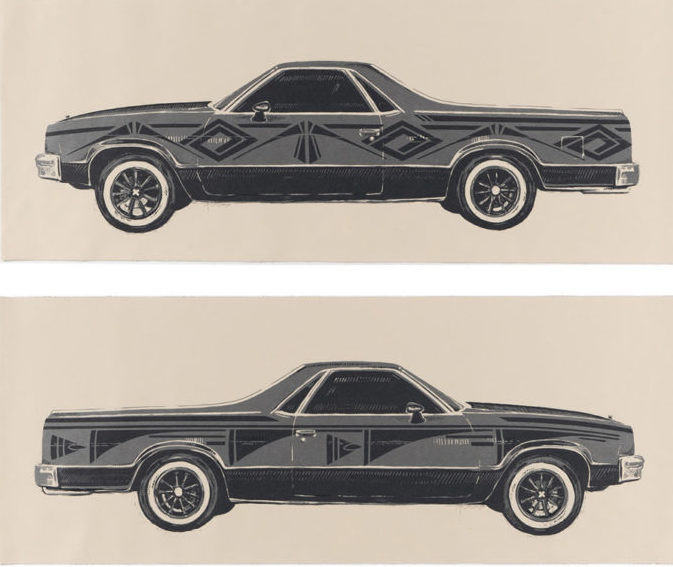
Rose studied at the University of New Mexico for three years, graduating from the Institute of American Indian Arts in Santa Fe with her BFA in 2007, before receiving her Masters in Fine Art from the Rhode Island School of Design in 2011. After returning to New Mexico, Rose immediately enrolled in Northern New Mexico College’s automotive program. While it may have seemed like an unconventional step, Rose had other ideas in mind. She wanted to pay homage to the Tewa pueblos and the low rider culture of northern New Mexico by rebuilding and customizing a 1985 Chevy El Camino. The black on black designs were inspired by traditional Tewa pottery and a nod to Maria Martinez’s signature designs and, as a result, she named the El Camino after the potter.
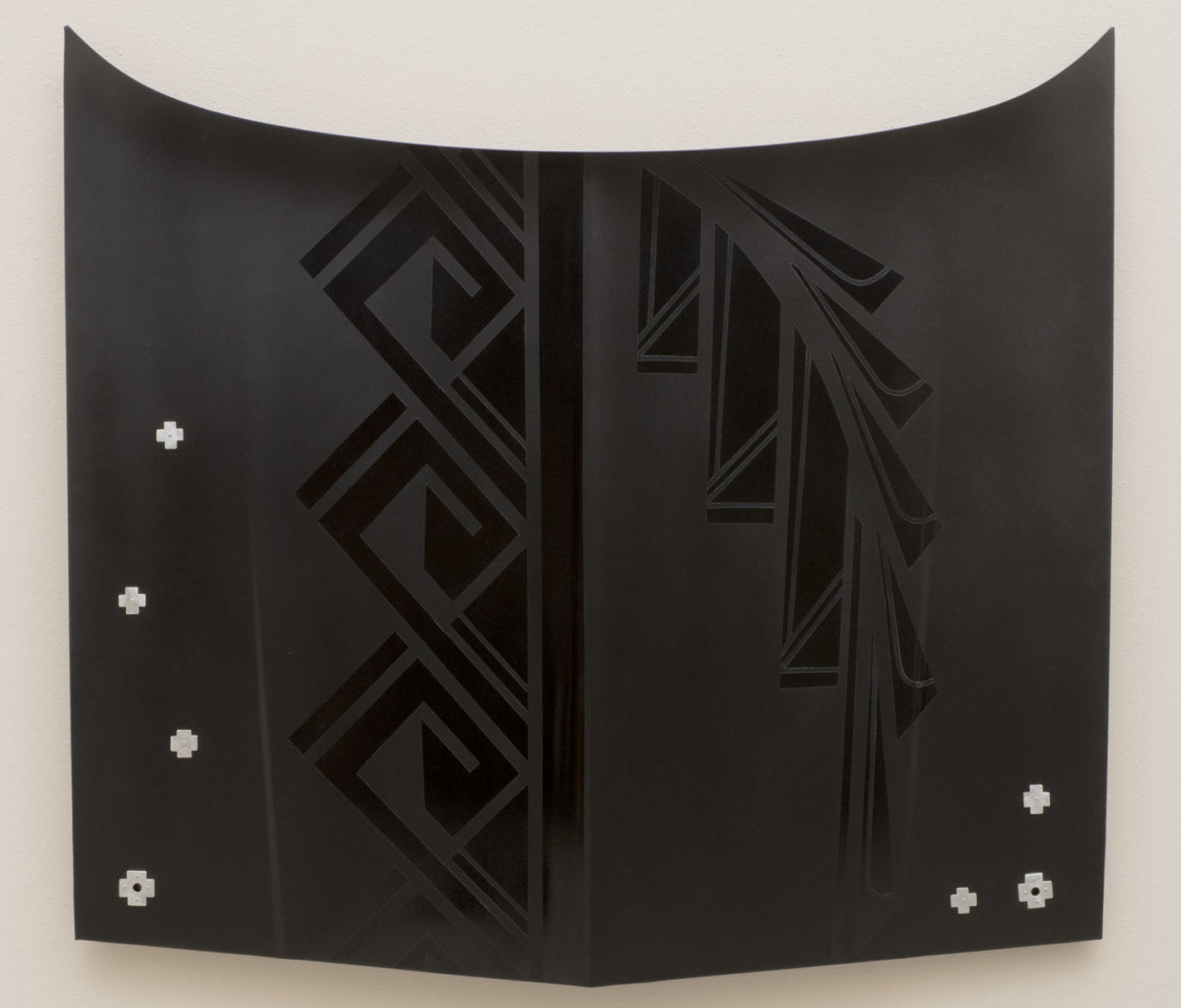
When speaking with the Minneapolis Institute of Art, Rose explained how the car came to represent Maria. Santa Clara Pueblo is a short 10 minute drive from Espanola, New Mexico – the low rider capital of the world – where cars are a major form of artistic expression and empowerment, giving disenfranchised communities a voice. Rose found a Chevrolet El Camino for sale on the side of the road and, at first, used it in the fields to help harvest her family’s crops, but she soon saw it as a vessel, much like pottery would have been used by her ancestors, and wanted to honor this concept. Rose describes the El Camino as “a very Spanish” car, one typically driven by those with Hispanic heritage who have a very deep history with the pueblos, and it had now been worked on and driven by member of a pueblo. Putting designs inspired by Black Mesa (the site of the first Pueblo Revolt and of major significance to the Santa Clara and San Ildefonso pueblos) and Maria were her way of reclaiming the vehicle. It was stamped with her ancestry.
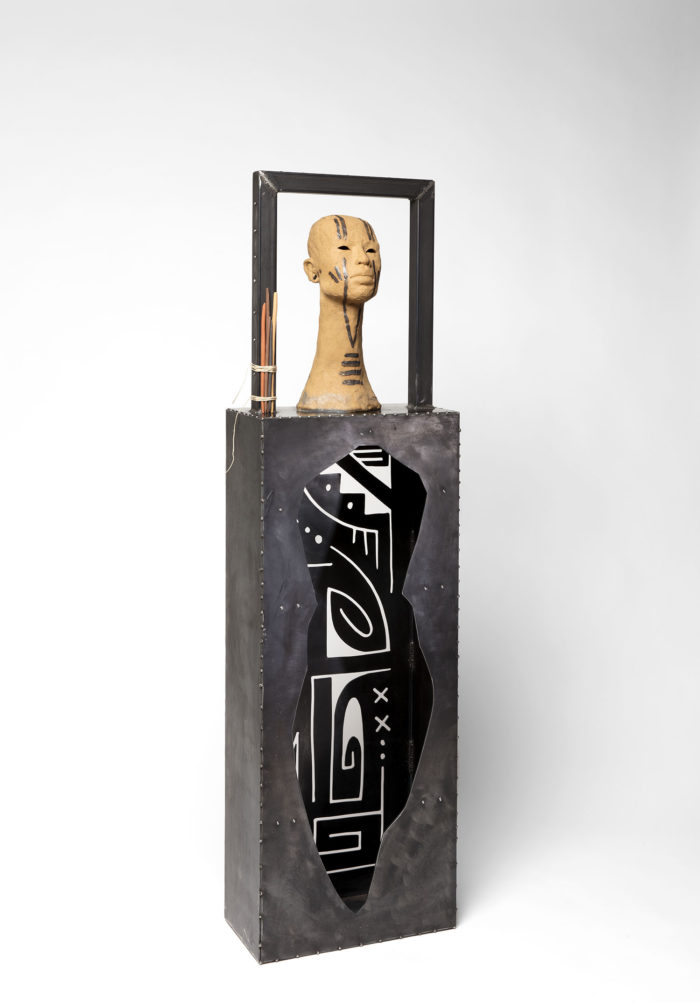
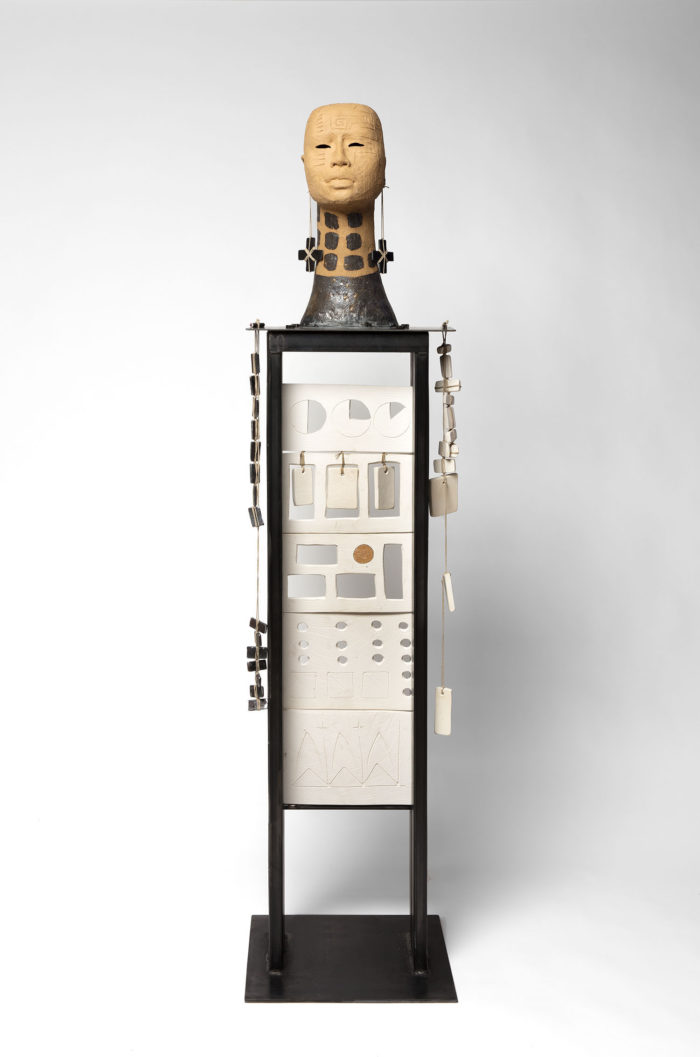
Along with paying tribute to artists who came before her, Rose’s art often reflects how she grew up. Her mother believed in true sustainability which has been practiced by her people before colonization of her land by Westerners. They grew all of their own food, made their clothes and shoes from old tires, and even harvested wax from bees to make candles since they didn’t have electricity. Rose found the concept of living off the land inspirational and, should the government and the western world collapse, Tewa people would persevere. Her sculptures, often comprised of found objects, local clay, metal, wood, leather and other fabrics, are post apocalyptic figures surviving and thriving in a new world, a world without colonist rule.
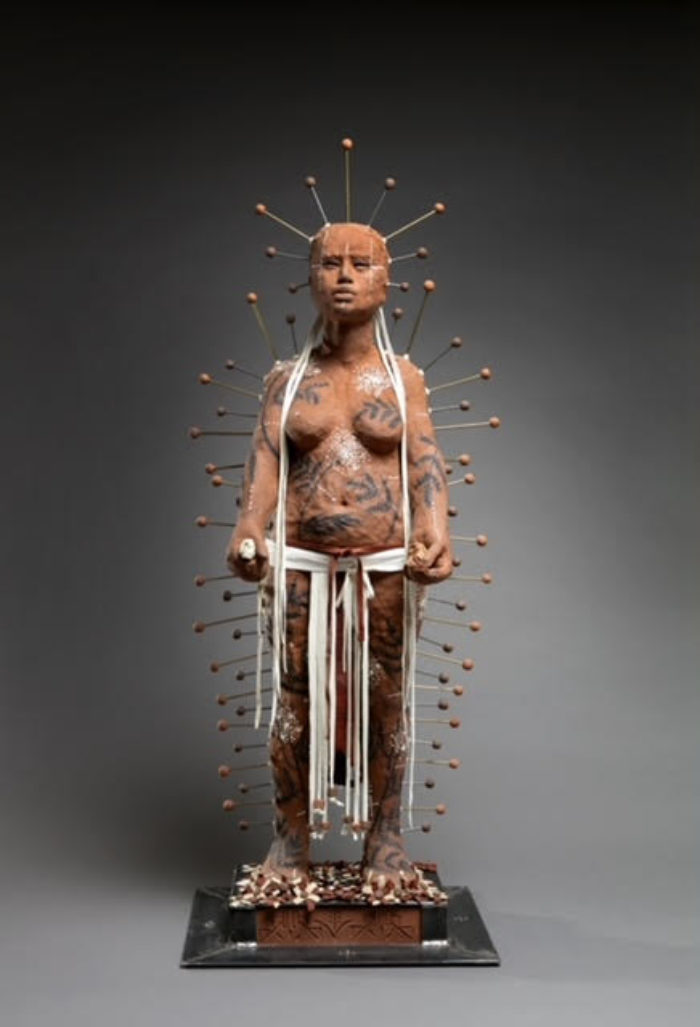
I am a mixed-media artist whose work addresses the emotional and existential impacts of our collective humanity. My work revolves around the figure as proxy. From matriarchal or androgynous ceramics to performance with attire and custom cars, these are links to empowered identities and cultures. …
My life-work is a seeking out of tools to use to heal the damages I have experienced as a human being of our postmodern and postcolonial era— objectification, stereotyping, and the disempowering detachment of our creative selves through the ease of modern technology. These tools are sculptural pieces of art that function in the psychological, emotional, social, cultural, spiritual, intellectual and physical realms. The intention of these tools is to cure, therefore, my hope is that they become hard-working utilitarian concepts.
-Artist statement from her website
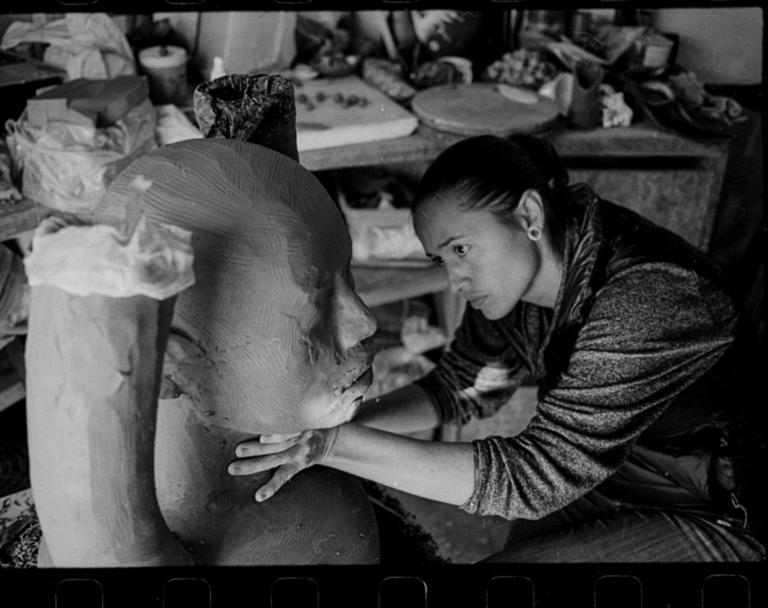
Rose lives and works in the Santa Clara Pueblo with her daughter, who she hopes to teach how to express herself creatively, as Rose’s mother did with her. Solo exhibitions of her work have been shown at Wheelwright Museum of the American Indian, Santa Fe, NM; Pomona College Museum of Art, CA; Colorado State University, Fort Collins, and SCAD Museum of Art, GA. Her work is in the permanent collections of the Denver Art Museum; Museum of Fine Arts Boston; Portland Art Museum; Princeton University Art Museum; and San Francisco Museum of Modern Art. She currently has an exhibition at Nevada Museum of Art in Reno closing on April 17th, 2022. Rose will be included in a show at the National Gallery of Art in Washington, DC curated by Jane Quick-To-See Smith that features the work of contemporary Native American artists, opening in the fall of 2022 and extending into spring of 2023.
